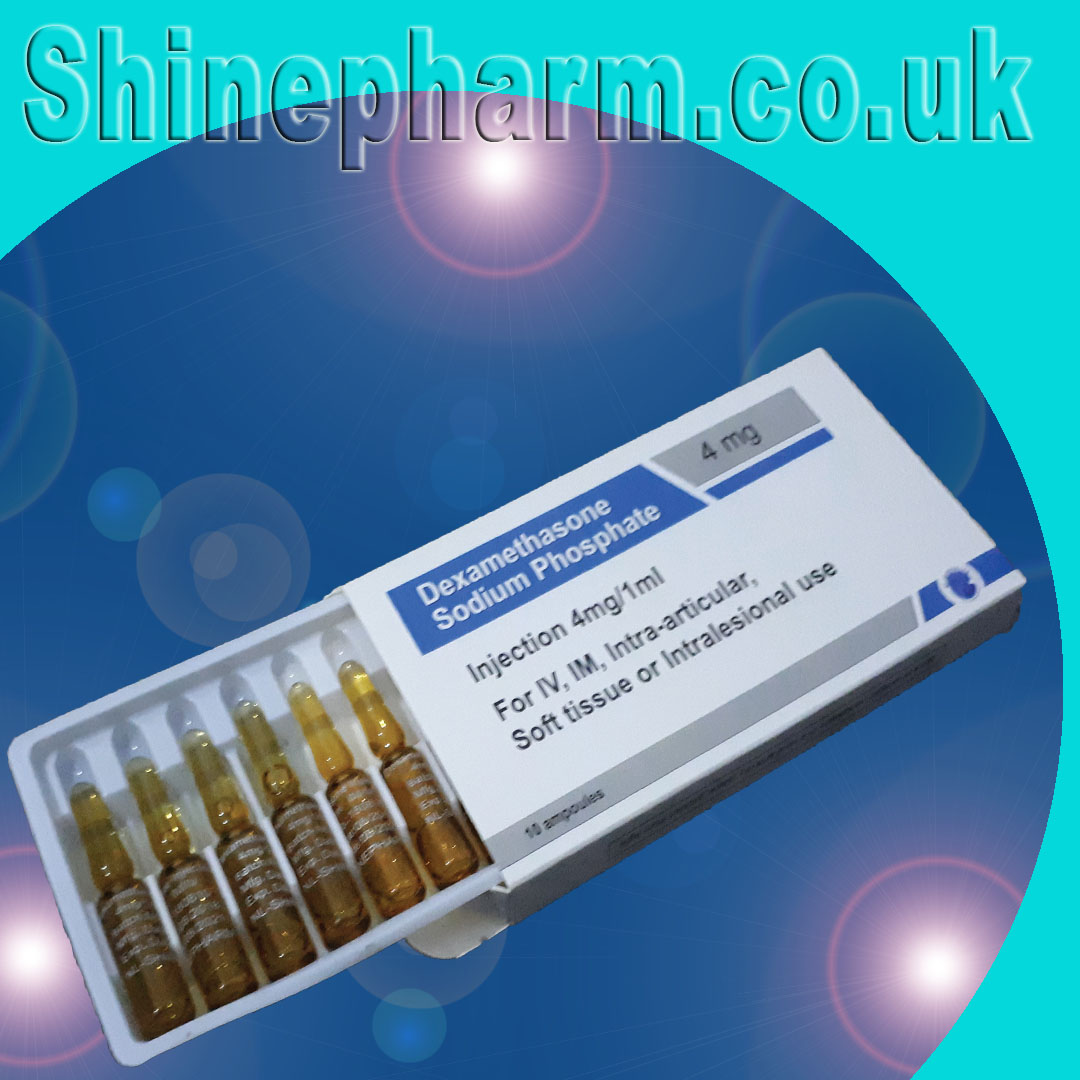Dexamethasone Injections




Dexamethasone injections deliver a potent corticosteroid directly into muscles, joints, or veins for rapid anti-inflammatory and immunosuppressive effects. These injections treat severe allergic reactions, autoimmune disorders, and inflammatory conditions like rheumatoid arthritis. The medication works 6-10 times stronger than prednisone, with effects lasting up to 72 hours per dose. Commonly administered for spinal cord compression, cerebral edema, and COVID-19 respiratory distress, dexamethasone injections require careful dosing due to potential systemic effects. Healthcare providers monitor patients for adrenal suppression and electrolyte imbalances during treatment.
Dexamethasone injections serve critical roles in emergency medicine, oncology, and rheumatology. They rapidly reduce swelling in brain tumor patients and prevent chemotherapy-induced nausea when given pre-treatment. Ophthalmologists use periocular injections for uveitis, while ENT specialists inject for severe Ménière's disease. The injections show particular efficacy in acute gout flares and bursitis, often providing pain relief within 12-24 hours. Recent protocols incorporate dexamethasone for multisystem inflammatory syndrome in children (MIS-C). Unlike oral steroids, injections ensure compliance and bypass gastrointestinal absorption issues.
Standard dexamethasone injection concentrations range from 4mg/mL to 10mg/mL, with dosing tailored to condition severity. For allergic emergencies, 4-20mg IV delivers immediate relief. Intra-articular injections for joint inflammation typically use 4-8mg per large joint. Cancer protocols often employ 20-40mg IV before chemotherapy. The medication's long half-life (36-72 hours) allows less frequent dosing than other steroids. Providers limit repeat injections to every 3-4 months in weight-bearing joints to prevent cartilage damage. Strict aseptic technique prevents infection at injection sites.
Injectable dexamethasone achieves peak plasma concentrations 8x faster than oral tablets, making it superior for emergencies. The injection form avoids first-pass liver metabolism, allowing lower doses for equivalent effects. Patients with vomiting or bowel obstructions benefit from guaranteed delivery. However, injections require clinical administration and carry higher infection risks. Oral tapering often follows initial injection therapy to prevent adrenal insufficiency. Cost differences are minimal, but injections incur additional administration fees. The choice depends on acuity, patient condition, and treatment goals.
Common adverse effects include transient hyperglycemia (especially in diabetics), insomnia, and mood changes. More serious risks include avascular necrosis with repeated use, opportunistic infections from immunosuppression, and Cushing's syndrome with prolonged therapy. Injection-specific concerns include tendon weakening (if injected near tendons) and cutaneous atrophy at the site. Contraindications include systemic fungal infections and live vaccine administration. Patients receive counseling to report vision changes, persistent headaches, or irregular heartbeats during treatment.
Pediatric dosing calculates as 0.02-0.3mg/kg/day, with careful growth monitoring. Pregnant women receive dexamethasone injections only for life-threatening conditions due to potential fetal effects. Elderly patients require lower doses and fall risk assessment due to possible dizziness. Hepatic impairment patients need dosage adjustments, while dialysis patients require post-treatment administration. Psychiatric history patients warrant close mood monitoring. Providers balance benefits against risks in immunocompromised individuals, often pairing injections with prophylactic antibiotics.
Dexamethasone binds to glucocorticoid receptors, modifying gene expression to suppress inflammatory cytokines (IL-1, TNF-α) and inhibit phospholipase A2. This action reduces prostaglandin synthesis and stabilizes lysosomal membranes in damaged tissues. The drug simultaneously decreases capillary permeability and limits leukocyte migration to inflamed areas. At high doses, it induces apoptosis in certain lymphocytes, explaining its efficacy in lymphomas and leukemias. Unlike mineralocorticoids, dexamethasone has negligible salt-retaining effects, making it preferable for patients with hypertension or heart failure requiring steroid therapy.
Strongest evidence supports dexamethasone injections for: prevention of chemotherapy-induced vomiting (90% efficacy when combined with 5-HT3 antagonists), treatment of croup (reducing intubation needs by 60%), and management of spinal cord compression (preserving ambulation in 35% of metastatic cancer cases). The RECOVERY trial demonstrated 35% mortality reduction in ventilated COVID-19 patients. Emerging uses include adjunct treatment for septic shock and refractory migraine clusters. Off-label applications require careful risk-benefit analysis and informed consent due to potent systemic effects.
For intramuscular administration, the ventrogluteal site offers optimal absorption with minimal nerve risk. Intra-articular injections use 22-25 gauge needles with joint aspiration prior to medication delivery. IV administration requires dilution in 50-100mL normal saline infused over 15-30 minutes to prevent phlebitis. Ultrasound guidance improves accuracy for small joint or epidural injections. Post-procedure, patients avoid strenuous activity for 48 hours to prevent medication dispersion. Clinicians document injection details (site, dose, approach) to track local tissue responses over time.
Generic dexamethasone injections cost $3-$15 per vial, making them highly accessible. Facility fees for administration typically add $50-$200 per procedure. Most insurance plans cover FDA-approved indications, though prior authorization may be required for certain off-label uses. Temperature-controlled shipping increases costs in resource-limited settings. The drug's inclusion on the WHO Essential Medicines List ensures availability in public health systems globally. Patient assistance programs help uninsured individuals access treatment for chronic conditions like multiple myeloma.
Patients receiving recurrent dexamethasone injections require monitoring for osteoporosis (annual DEXA scans recommended), cataracts (biennial eye exams), and HPA axis suppression (morning cortisol checks). Calcium/vitamin D supplementation helps prevent bone loss. Gradual tapering is essential after >2 weeks of therapy to avoid adrenal crisis. Injection site rotation prevents lipoatrophy. Treatment plans incorporate the lowest effective dose and frequency, often alternating with non-steroidal options to minimize cumulative toxicity while maintaining disease control.
Current studies investigate nanoparticle-encapsulated dexamethasone for targeted delivery, reducing systemic effects. Phase III trials are evaluating sustained-release intra-articular formulations lasting 3 months per injection. Genetic research aims to identify patients likely to experience exceptional responses or severe side effects. Novel applications being studied include prevention of chronic post-surgical pain and treatment of cytokine release syndrome in CAR-T therapy. These innovations promise to enhance precision while reducing treatment burden.
Dexamethasone injections treat severe inflammation, allergic reactions, autoimmune disorders, and certain cancers. Common uses include: acute asthma attacks, spinal cord compression, chemotherapy-induced nausea, and COVID-19 respiratory distress.
IV/IM dexamethasone begins working within 1 hour (vs 2-4 hours orally). Peak effects occur at 1-2 hours post-injection, with duration lasting 3-7 days depending on dosage and condition treated.
• Anti-inflammatory: 0.5-9mg daily IV/IM
• Cerebral edema: 10mg IV then 4mg every 6 hours
• Chemo nausea: 8-20mg pre-treatment
• COVID-19: 6mg IV once daily for 10 days
• Pediatric: 0.02-0.3mg/kg/day divided q6-12h
Subcutaneous injection can cause severe tissue atrophy. The deltoid/gluteal muscles are preferred sites. Rotate injection sites to prevent lipodystrophy with repeated administration.
Avoid in: systemic fungal infections, cerebral malaria, live vaccine administration, active peptic ulcers, and untreated infections. Use extreme caution in diabetics (causes hyperglycemia) and CHF patients (fluid retention risk).
Check for: pain/swelling (may indicate abscess), skin thinning (sign of local atrophy), and persistent redness (possible infection). Report any visual disturbances immediately (risk of ocular complications).
Its minimal mineralocorticoid activity (reduced fluid retention), long 36-72 hour half-life, and 25-30x greater anti-inflammatory potency than cortisol allow for less frequent dosing compared to other corticosteroids.
Compatible with most solutions but physically incompatible with: amphotericin B, phenytoin, and diazepam. Always flush line before/after administration. Never mix in same syringe with antibiotics.